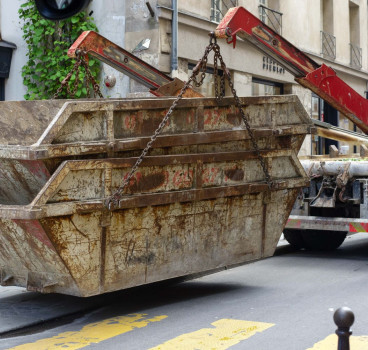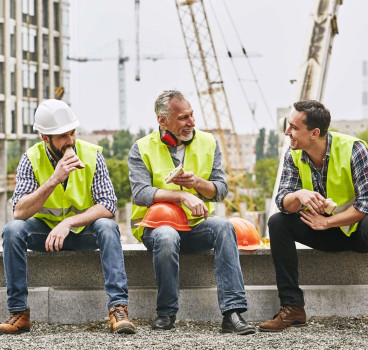Lunch atop a skyscraper - more than just a Photo Op
Just had to include this in our Construct IQ section. This could not happen anymore in our health and safety conscious age. The image is iconic – eleven ironworkers casually perched on a steel beam, hundreds of feet above the bustling streets of New York City, enjoying their lunch break.
This is the famous "Lunch Atop a Skyscraper" photograph, a timeless snapshot that has captivated audiences for nearly a century. But what if we told you there's more to this story than meets the eye?
While the photo depicts a seemingly ordinary moment, it was actually a carefully orchestrated publicity stunt. The year was 1932, the heart of the Great Depression. Construction was underway on the Rockefeller Centre, a massive project that symbolised hope and progress in a struggling nation.
To generate positive press and showcase the advancements in skyscraper construction, photographer Charles C. Ebbets, was commissioned to capture images of the ironworkers at work. This is his image above – not good for anyone afraid of heights.
The photograph was taken on the 69th floor of the nearly completed RCA Building (now known as 30 Rockefeller Plaza). The exact identities of the workers in the photo remain a mystery, although some theories suggest they were Mohawk ironworkers who were known for their bravery and skill at high altitudes.
Despite being staged, the "Lunch Atop a Skyscraper" photo undeniably captures the essence of early high-rise construction. These men, with no apparent safety harnesses, demonstrate the incredible courage and bravado required to build these architectural marvels. The photograph serves as a powerful reminder of the human ingenuity and risk-taking involved in shaping our skylines.
The enduring popularity of the "Lunch Atop a Skyscraper" photo goes beyond its historical significance. It continues to inspire artists, photographers, and filmmakers who pay homage to the image in their own creations. You can even find the photo recreated as a tourist attraction at the Top of the Rock observation deck at Rockefeller Centre!
So, the next time you see this iconic photograph, remember that it's more than just a staged lunch break. It's a testament to the bravery of the ironworkers who built our cities, a symbol of American resilience during a challenging time, and a reminder of the enduring power of human achievement.
However, in the course of our research, we did look to see how many recorded accidents and deaths occurred during the building of such skyscrapers. Unfortunately, there isn't a single, definitive source pinpointing the exact number of deaths from falls during the construction of early buildings like the one in the "Lunch Atop a Skyscraper" photo.
We do know that building practices in the early 20th century involved significant risks. Workers often lacked proper safety equipment like harnesses and nets, making falls a major cause of death.
Record-keeping practices in the early 1900s were also not as comprehensive as they are today. This makes it difficult to obtain precise figures for construction worker deaths, especially for specific projects, but I think we can guess that it was a dangerous occupation.
The "Lunch Atop a Skyscraper" photo, despite being staged, serves as a powerful reminder of the perilous nature of early skyscraper construction – and while a precise figure for deaths caused by falls on that specific project may be difficult to find, historical context and safety practices of the era leave no doubt about the significant risks construction workers faced in those times - respect.
Additional Articles

What construction can learn from Ant colonies about logistics and site movement
If you want to witness flawless logistics, responsive movement and coordinated planning in action, you do not need to observe a hyper-automated warehouse or a cutting-edge construction site - you...
Read moreWhy everyone has a favourite skip and what it says about you
In construction, there are two universal truths – tea, of course, is essential and believe it or not, everyone - whether they are prepared to admit it - has a favourite skip. It may sound strange,...
Read more

The cultural significance of the bacon roll in UK construction
Walk onto any construction site in the UK at 7:30am and you’ll quickly discover that the most important piece of equipment isn’t a digger, a drill or a laser level. It’s a humble, foil-wrapped,...
Read more